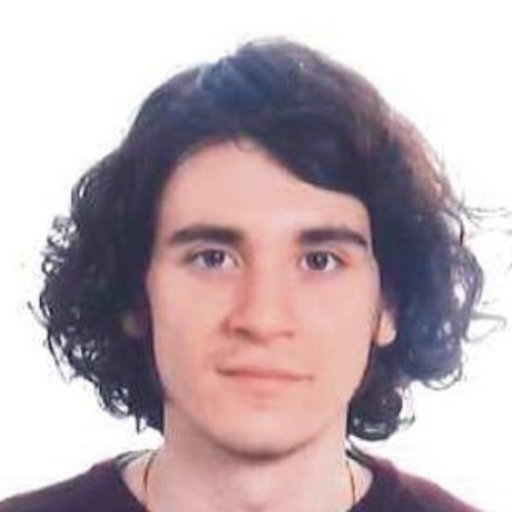Landslide hazard and risk
Curriculum: HYRIS
Term: 2nd year, 1st Semester
CFU: 6
SSD: GEOS-03/B
Duration and Schedule: available here
Office hours: please contact the lecturers
OBJECTIVES
Scope of the course is to introduce the student to recognize and characterize different types of slope instabilities and to be able to use tools for the landslide hazard and risk assessment, to select techniques for monitoring and mitigation of landslide risk.
The course consists of lectures to illustrate the theory and tutorial sessions where the emphasis is on applications and problem solving. Each subject is illustrated with the support of experimental and observational evidences and well-documented case histories concerning landslide hazard and risks drawn from the experience of the instructors. Moreover, the course is inserted in the frame of the topics of the sustainability, as defined in the 2030 Agenda for Sustainable Development, in particular in the following goals: Goal #13 Take urgent action to combat climate change and its impacts.
DESCRIPTION
Landslide terminologies and classifications. Landslide dynamics. Predisposing and triggering factors, landslide occurrence as a consequence of land use and climate changes. Methodologies of landslide investigation and mapping, landslide inventories.
Landslide monitoring and early warning: ground-based and remote surface displacements measurement techniques, monitoring of hydro-meteorological variables. Rainfall threshold for landslide prediction. Landslide mitigation: structural and non-structural protection, approaches following the sustainable development as promoted by the 2030 Agenda for Sustainable Development. Lesson learnt from some case histories.
Deterministic methods for the evaluation of the landslides susceptibility and hazard: yield criterion of the materials, slope safety factor, limit equilibrium analysis, stability charts, methods of slices, physically-based models
Probabilistic methods for the evaluation of the landslides susceptibility and hazard: uncertainties in the computation of slope safety factor, probabilistic methodologies
Numerical methods for the evaluation of landslides susceptibility and hazard: continuum methods, non-continuum methods, shear strength reduction method, concept of local safety factor
Knowledge-driven and data-driven methods for the evaluation of landslides susceptibility and hazard
Methodologies for the assessment of the model reliability and its validation
Landslides risk analysis: basic concepts of landslides risk, estimation of risk, landslides risk management, landslides risk mitigation in the frame of the goals of the 2030 Agenda for Sustainable Development.
REQUIREMENTS
Basic knowledge of Engineering Geology
REFERENCES
- N. Lu, J.W. Godt. Hillslope hydrology and stability. Cambridge University Press..
- Lynn M. Highland, United States Geological Survey, and Peter Bobrowsky, Geological Survey of Canada (2008). The Landslide Handbook—A Guide to Understanding Landslides. USGS Circular 1325. Reference textbook.
- Landslides: Investigation and Mitigation : Special Report 247 (Special Report (National Research Council (U S) Transportation Research Board)) by A. Keith Turner (Editor), Robert L. Schuster (Editor). Reference textbook.
- Thomas Glade, Malcolm Anderson, Michael J. Crozier (2005). Landslide Hazard and Risk. John Wiley & Sons, 15 apr 2005 – 802 pagine. Reference textbook.
- Course notes, scientific articles and other material will be provided during the course.
ASSESSMENT
Assignments will be handed over and graded during the course. The final examination will consist of a 3 hours, written test. The final-exam format is closed-book. Grading: 40% assignments, 60% final exam.
Instructor 1: Claudia Meisina: official webpage and CV

Institution: Department of Earth and Environmental Sciences
E-mail: claudia.meisina@unipv.it
Voice: +39 0382 985831
Fax: +39 0382 985890
Skype: claudia.meisina
Bio: Claudia Meisina received his PhD in Earth Sciences from the University of Pavia (Italy). Currently is associate professor in Engineering Geology at the Department of Earth and Environmental Sciences of University of Pavia, where she leads the Laboratory of Engineering Geology and she is member of the PhD School of Earth and Environmental Sciences.
She has been a post-doc at the BRGM in France. She received fellowships through Italian Foreign Affairs Ministry and Centre International pour la Formation et les Echange Géologiques.
She is member of the executive board of the italian IAEG and Secretary of the Italian Association of Engineering Geology.
She is actually involved in Liquefact Horizon 2020 Project and in several projects about the role of land use in shallow landslide triggering. She published 50+ peer-reviewed papers and 70+ papers in peer-reviewed conference proceedings/book chapters in the field of engineering geology.
My research areas are:
- development and application of methodologies for subsoil geological model and for engineering geological mapping to support geohazard assessment (shallow landslide, swelling/shrinkage of clay soils and liquefaction);
- development of methodologies for the geological interpretation of satellite radar interferometric data for landslide and subsidence identification and monitoring;
- Study of the triggering mechanism of rainfall-induced landslides in different climatic and geological contexts, through the long-term hydro-mechanical monitoring of shallow soils. Shallow landslide susceptibility assessment.
Instructor 2: Massimiliano Bordoni: official webpage and CV

Institution: Department of Earth and Environmental Sciences
E-mail: massimiliano.bordoni@unipv.it
Voice: +39 0382 985830
Fax: +39 0382 985890
Skype: massi.bordoni
Bio: Massimiliano Bordoni received the PhD title in Earth Sciences at University of Pavia in 2015. He is now Research Fellow in Engineering Geology at the Department of Earth and Environmental Sciences. He published +50 papers in peer-reviewed journals in the field of Engineering Geology. His main research interests are: monitoring and modeling of landslides; land use effects on landslides occurrence; soil hydrological monitoring for engineering geological applications; geological models. He is also involved in different projects, funded by Italian and European Institutions, about land degradation and landslides modeling and hazard assessment and about soil monitoring.
